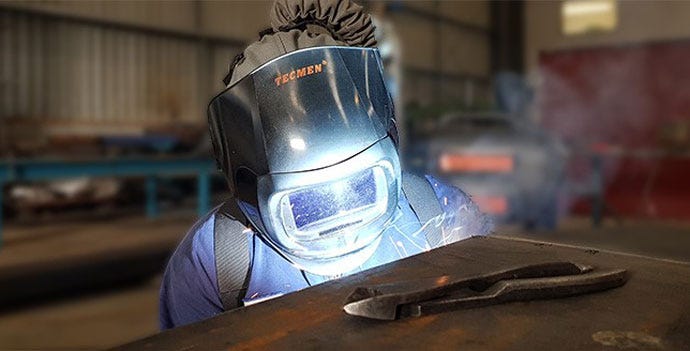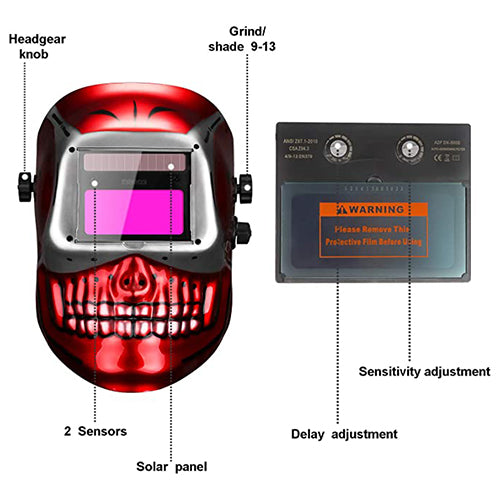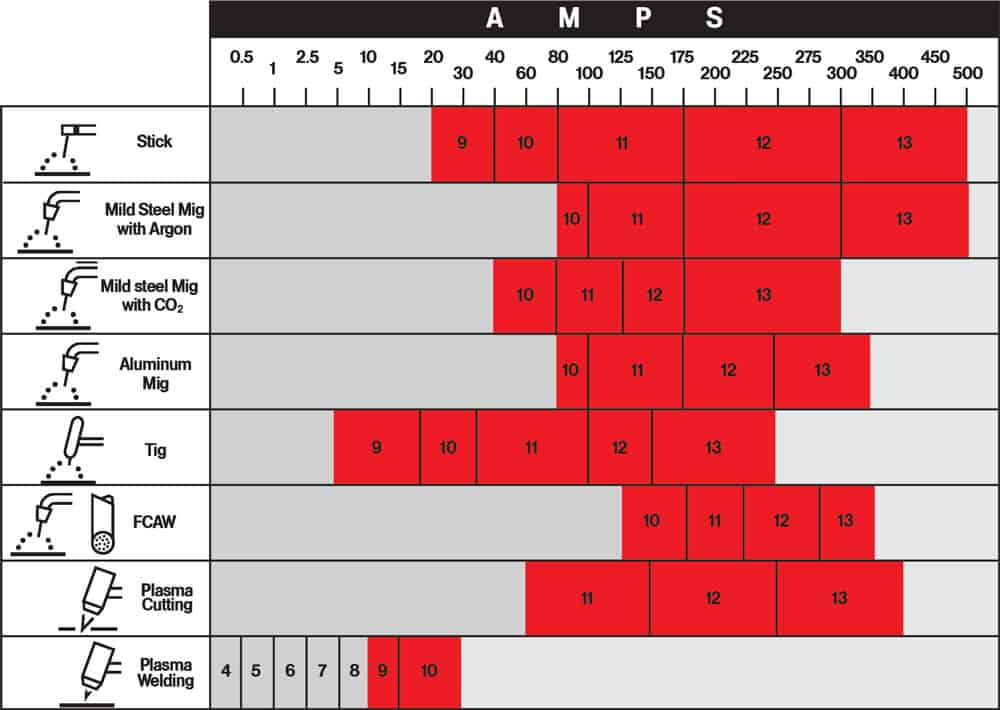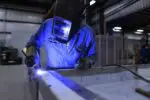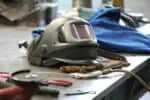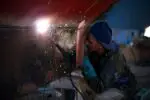Auto-darkening welding helmets are simple. Made with different filters and tough shells, this protective equipment is always in demand in the realm of welding.
One of the major factors that make auto-darkening welding helmets super cool is you are not constantly adjusting the panel to do your job. They are automatic and can change the shades and filter the harmful rays by themselves.
Auto-darkening welding helmets can assess the intensity of light and work accordingly. In other words, the sensitivity of the arc light sets the helmet to work.
Once the light hits the panel it gets charged rearranging the liquid crystals to facilitate the filtering of rays.
The sensitivity setting in the auto-darkening welding helmet allows the user to determine what intensity of light triggers the panels.
Going further…
What does a sensitivity knob do?
All auto-darkening welding helmets come with a sensitivity knob on the side. This feature gives the user the freedom to adjust the light-sensing capacity of the helmet. The knob can be turned and set by the user.
It is advised to keep the sensitivity high so that the helmet will change the shade even if the light of the arc is not intense.
A welder will have to be careful not to expose his eye to any harmful rays during welding at any cost. Hence, the higher the sensitivity is, the higher would be your safety.
Most of the welding procedures would work fine in mid-range sensitivity so try to keep the sensitivity level at least 50% before you start.
How to know if sensitivity is set at the right level?
Setting the sensitivity of an auto-darkening helmet is not a straightforward process. It is a trial-and-error method.
Place the helmet in front of a bright light and see how much the filter darkens. Use it and check whether you are able to see what you are working with.
The key is to ensure that your eyes are shielded but your visibility is not compromised.
Setting the sensitivity level and shades depends on the user. If you are not happy with what you are working with you can change the sensitivity level to your satisfaction.
How to set the sensitivity level in an auto-darkening welding helmet?
Step 1: Take your auto-darkening welding helmet and place and turn the sensitivity knob to the lowest to start. The lowest setting is 0 and the highest is 10. This will make the filter dark.
Step 2: Place the helmet in a good lighting condition similar to the atmosphere in which you will use it. This enables you to assess the working of the helmet and changes of the filter shade rightly.
Step 3: Turn the knob the other way till the filter clears. This indicates that the filter is now ready and is at the right sensitivity level.
When you start working the panel changes shade and darkens enough to protect your eyes.
Are there sensitivity settings to refer?
Broadly speaking, yes! Have a look at the table below just to have an idea of setting the sensitivity for which type of welding.
| Type of welding | Sensitivity Range |
| Stick Electrode | Mid-Range |
| Short Circuiting (MIG) | Low/Mid-Range |
| Pulsed & Spray (MIG) | Mid-Range |
| Gas Tungsten Arc (TIG) | Mid/High-Range |
| Plasma Arc Cutting/Welding | Low/Mid-Range |
Note: This is just for your reference, you can set the sensitivity level according to your need.
What is grind mode used for?
Grind mode is a cool feature of auto-darkening welding helmets. It enables the user to quickly switch between the shades with a press of a button or by flipping. Either way, the user does not need to remove the helmet.
When put on grind mode, the shade will be #3. This means the sensitivity of the filter would be minimal and the sparks that come from grinding will not trigger the helmet lens.
This is a huge help for those constantly removing the helmet for grinding or other less intensive jobs.
How is shade setting different from sensitivity settings?
Shade setting is different from the sensitivity setting. Shades are how the panel is set to darken for each task. Whereas, sensitivity is how much light can trigger this darkness.
Shade numbers vary from #8 to #13. The lower the shade the more the be light that passes through. Grinding can be done with lower shades while cutting require higher ones.
Should there be any concern if you are a newbie in welding while setting the sensitivity level?
No, do not hesitate if you are just starting and are in doubt. Experts say to start at the mid-level for all welding tasks and fine-tune after that. This way the welder is not risking anything.
Take time and observe how each sensitivity level aids in the welding process. Finalize the one that you find most comfortable.
A quality auto-darkening welding helmet will have several shades than its competitors. Understand the features before buying so that maximum benefit can be reaped from the equipment.
To conclude
Sensitivity is a major factor that impacts the working of an auto-darkening welding helmet. Set the level according to your need and remember to ensure that the sensitivity should never be set lesser than your requirement.
FAQ
Should I buy an expensive auto-darkening helmet?
An expensive auto-darkening helmet gives the benefit of a longer lifetime. Most of these helmets come with quality batteries that last for years. When they die you can easily find their replacements.
How viable are solar auto-darkening welding helmets?
They are comfortable, economical and lightweight. Solar auto-darkening helmets come with batteries as well.
They use the battery charge to get started and then switch to solar energy making the batteries last longer than conventional auto-darkening welding helmets.
Can I set my auto-darkening welding helmet at the lowest sensitivity while welding?
No. It is advised not to work with the lowest sensitivity due to the damage that the arc light can cause. Always start welding from the mid-level.

